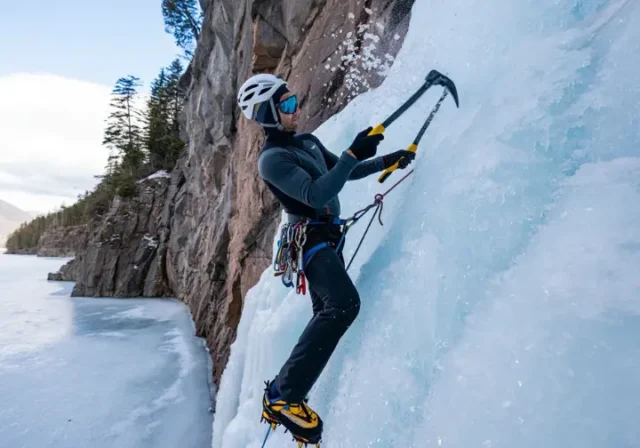In this article
The first sight of Lake Willoughby in winter can be breathtaking – a landscape transformed by the visual spectacle and intimidating grandeur of colossal ice formations and giant ice flows. For any ice climber, this is a call to adventure. This article serves as your definitive guide to understanding, planning, and safely experiencing lake willoughby ice climbing. We’ll explore why this Vermont locale is celebrated as a “crown jewel” for steep ice and multi-pitch ice climbing in the Northeast USA, covering its geology, typical conditions, iconic ice routes, safety considerations, essential gear, guiding options, and the vital role of stewardship in preserving this magnificent climbing area. Prepare to discover what makes Willoughby a must-visit destination for dedicated climbers; for the truly addicted ice climber, there’s never enough Lake Willoughby.
Understanding the Ice: Willoughby’s Unique Climbing Environment
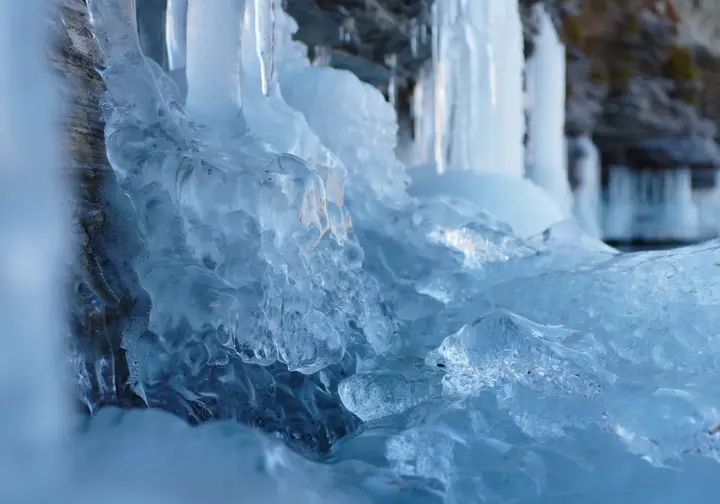
Lake Willoughby’s reputation as a world-class ice climbing venue stems from a confluence of specific geological and meteorological factors. These elements dictate not only the formation of its impressive ice but also the seasonal rhythms and inherent hazards that ice climbers must diligently understand. Comprehending Lake Willoughby ice climbing conditions begins with appreciating the very ground, snow, and weather that shape this frozen playground. The impressive elevation of the surrounding cliffs also plays a role.
Geology’s Grand Design: Shaping a Climber’s Paradise
The dramatic cliffs of Mount Pisgah and Mount Hor, which cradle Lake Willoughby and host its famed ice routes, are a direct result of powerful glacial forces that carved this landscape millennia ago. The primary bedrock, composed of Willoughby granodiorite and other metamorphic rocks, features numerous fractures. These fractures are instrumental in how water seeps and freezes, ultimately dictating where an ice climb will form. A key feature, particularly on Mount Pisgah, is the presence of Boreal Calcareous Cliffs.
These cliffs, formed on calcium-rich rock, support rare plant communities on calcareous cliffs and contribute to the area’s unique ecology, underscoring the need for climber sensitivity. The glacial history of Vermont landscapes provides a broader context for these formations. The specific characteristics of the rock, such as its permeability and seepage patterns, directly influence how and where ice accumulates, impacting route selection and the quality of the ice itself. For climbers, understanding unique geological formations for climbing in various locations can enrich their appreciation of places like Willoughby where you might Willoughby find rock suitable for mixed climbing or see interesting ice/turf interactions.
The “Lake Effect” and Ice Formation Dynamics
The deep, cold waters of Lake Willoughby significantly influence the local microclimate, playing a crucial role in the process of waterfall ice formation. Seasonal freeze-thaw cycles, combined with groundwater seeping from the cliffs, are the fundamental ingredients for these ice flows. The orientation of each cliff also matters; Mount Pisgah’s predominantly southwest-facing aspect means it receives considerable sun exposure.
This can lead to the creation of ephemeral ice lines, perhaps a delicate ice smear or fragile icicles, where conditions change with surprising speed. Climbers at Willoughby might encounter a spectrum of ice types, from pliable plastic ice or secure hero ice to more treacherous delaminated, chandeliered, or brittle ice blobs. Factors like ambient temperature, wind, and sun exposure determine how different ice types form. A general knowledge of understanding lake ice safety is also beneficial for any winter visitor. Grasping these dynamics and understanding variable ice conditions is vital for assessing both safety and the nature of the challenge ahead.
Seasonal Rhythms: Prime Time for Willoughby Ice
The prime ice climbing season at Lake Willoughby typically falls within the deep winter months, generally January and February. This period usually offers the consistent cold temperatures necessary for substantial and reliable ice formation, allowing one to climb thicker ice. However, climbers are increasingly contending with the influence of broader climatic trends. Warmer winters can affect the length of the season, the reliability of ice, and its overall predictability.
Concerns about mid-winter rain and unseasonable thaws are becoming more common, potentially leading to a shorter or more interrupted season; the impact of warming winters on ice climbing is a growing concern across the Northeast. Extreme caution is advised during the early season, when thin ice may be poorly bonded, and also in the late season, when it may become rotten and unstable. Consulting detailed mountain weather forecasts and making conservative decisions are paramount during these shoulder periods, especially if you’re planning a full ice week. Applying principles of strategic timing for seasonal climbs is just as relevant here as on larger expeditions.
The “Wild” Feel and Objective Hazards
Despite some approaches being relatively accessible, Lake Willoughby retains a distinct remote and “wild” atmosphere. Climbers here are very much subject to nature’s terms. It’s a place where objective hazards – dangers that exist regardless of a climber’s skill level – are prevalent. These include falling ice, the potential for avalanches in specific gullies, and rapidly changing conditions. Acknowledging and preparing for these is not just advisable, it’s crucial for a safe outing.
For insights on these dangers, one might review information on hazards of early season ice or seek a broader perspective on understanding objective hazards in mountaineering. The environment often dictates a climbing style that is technical, delicate, and sometimes bold, demanding high situational awareness and the ability to adapt. This awareness of variable ice conditions and hazards is a hallmark of experienced ice climbers.
Access and Approaches: Reaching Willoughby’s Frozen Amphitheaters
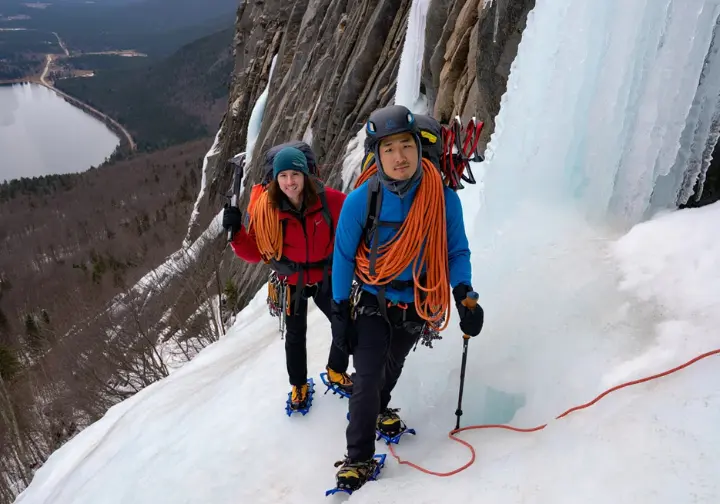
Getting to Lake Willoughby’s spectacular ice, particularly the main climbing venues on Mt. Pisgah and Mt. Hor, involves straightforward travel followed by more rugged approaches. This section details how to reach the lak (as some affectionately shorten it, though “lake” is standard), winter parking logistics, and the typical hikes to the base of the climbs, ensuring you can focus on accessing Lake Willoughby ice climbing efficiently.
Getting to Lake Willoughby, VT
Most climbers will approach Lake Willoughby via Interstate 91. Take Exit 23 for Lyndonville/Route 5, then follow Route 5 North to the town of West Burke. From West Burke, Route 5A South winds along the eastern shore of Lake Willoughby, leading directly to the primary ice climbing areas. For those coming from popular New England climbing hubs, the drive from North Conway, NH, for example, is roughly 2 to 2.5 hours. As you drive along Route 5A, the dramatic cliffs and frozen ice flows come into view, offering an inspiring preview of the adventures ahead. Always check current Vermont road conditions and travel information before setting out, especially during winter.
Winter Parking Strategies and Areas
The main plowed parking lot for accessing Mt. Pisgah climbs is located at the southern end of Lake Willoughby. For climbing routes situated further north along Mt. Pisgah, or for access to Mt. Hor, smaller plowed pullouts may be available along Route 5A. These spots, however, are limited and fill very quickly, especially on weekends and holidays. Critical winter parking considerations include the variability of plowing, the sheer scarcity of spots – often necessitating a very early arrival – and strict adherence to parking regulations. Never block roads, driveways, or impede snowplow operations. For current information on winter trail access and parking, local resources can be helpful. We strongly encourage carpooling to maximize the use of limited space. It’s wise to have backup climbing plans if parking is full, as this can be a significant bottleneck. This mirrors challenges at other popular venues, making planning for limited parking at popular climbing areas a transferable skill for any ice climber.
Approach Hikes: Mt. Pisgah & Mt. Hor
The general approach to the main ice climbs on Mt. Pisgah begins from Route 5A. This typically involves hiking up steep talus slopes, often taking between 30 to 50 minutes depending on the specific route and snow conditions. Finding a well-broken trail can significantly ease the effort; conversely, trail-breaking in deep snow can be arduous. Access to Mt. Hor’s main face often involves crossing the frozen lake – a decision that demands careful assessment of ice thickness and safety, especially if there are areas of open waters – or following the shoreline.
For the more secluded climbs on Mt. Hor’s South Side, the approach is more involved, usually requiring a ski or snowshoe from Bean Pond or the Mt. Hor parking lot, followed by a significant uphill slog. For general area information, consult the Willoughby State Forest trail information provided by Vermont’s Department of Forests, Parks and Recreation. Being prepared for these hikes means preparing for approach hikes and trail conditions as one would for any mountain environment, considering the elevation gain.
Conquering the Classics: Iconic Lake Willoughby Ice Routes
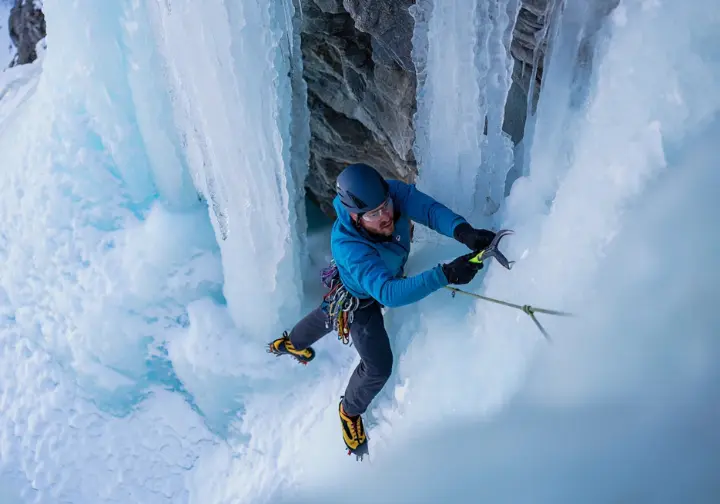
Lake Willoughby’s cliffs are adorned with some of the most classic Lake Willoughby ice climbing routes in the Northeast, true New England ice. This section delves into these legendary climbs, from Mt. Pisgah’s formidable challenges, often considered the epitome of ice climbing at Lake Willoughby, to the more moderate ice adventures found on The Tablets, along with an essential explanation of ice climbing grades to help you choose your objectives wisely. Many an ice climber dreams of ticking off these exciting ice climbs.
Understanding Ice Climbing Grades (WI, M)
Ice climbs are primarily graded using the Water Ice (WI) system, which ranges from WI1 (low angle, easy ice) to WI7+ (vertical or overhanging, highly technical, and often thin ice or poorly protected ice). At Willoughby, you’ll commonly encounter ice routes in the WI3 to WI6 range. A WI3 typically involves sustained 60-70 degree ice with good rests. WI4 means more sustained vertical sections. WI5 indicates long, strenuous, and continuous vertical ice.
WI6 pushes this further with very sustained, difficult, and often technical climbing. Some climbing routes may also receive a Mixed (M) grade if they involve climbing rock sections with ice tools and crampons. Commitment Grades (I-VII) indicate the overall length and seriousness of the route. Many climbers find that Willoughby grades can feel “stiff” or “sandbagged,” meaning they might feel harder than the grade suggests. It’s wise to approach route selection conservatively, especially if it’s your first visit. For a broader context of climbing difficulty grades, resources are available. You can also find a general ice and mixed climbing grade overview online or through guidebooks for understanding climbing grade systems.
Mt. Pisgah’s Steep Challenges (WI4-WI6+)
Mount Pisgah is the heart of Willoughby’s formidable reputation, renowned for its long, steep ice, and committing ice routes. It’s crucial to remember that route difficulty here is profoundly condition-dependent, varying significantly with the quality and thickness of the ice; one day it might be hero ice, another day a challenging ice smear. One of the most historic lines is Twenty Below Zero Gully (WI4+ III); often the first major route to form, it typically offers two pitches of engaging gully climbing but is very sensitive to conditions, sometimes featuring a big snow ledge or thin ice sections.
More elusive and coveted is Called on Account of Rains (WI5+ R IV), a route often found in thin or wet conditions, featuring a sustained and challenging crux first pitch, potentially on a mid-cliff ledge. Access to its upper pitches can sometimes be gained via a ledge system. Last Gentleman (WI5 IV) stands as a major classic in its own amphitheater, characterized by its wide ice flow and distinct alpine feel, though it can be affected by sun.
Perhaps the most visually iconic is Mindbender (WI5+), known for its intimidating, huge ice and unrelenting steepness. This route often seeps water, adding to its challenge. You can find detailed route information for Mindbender on community platforms. The first ascent history of Willoughby routes adds another layer of appreciation for these lines, each a profile of a classic challenging climb. These are truly hard ice routes.
More Pisgah Classics (WI5-WI6)
Beyond the most famous names, Mt. Pisgah hosts other outstanding classic ice climbs. Crazy Diamond (WI5- II) is known for its variable conditions; it can sometimes form with harder, free-hanging ice sections and has reportedly been affected by summer rockfall in recent years. Glass Menagerie (WI5 III) is another sought-after classic, featuring a notably steep second pitch and a protective belay cave, though it’s susceptible to sun and can be wet.
For a stunning and sustained challenge, The Promenade (WI5+ IV) offers a memorable crux pitch up a hanging curtain of ice, often with a cave belay; its first ascent historically took two days. Information on The Promenade ice route is available on climbing forums. Representing the upper echelon of pure ice difficulty at Willoughby, Call of the Wild (WI6) was New England’s first WI6 and remains a significant benchmark; indeed, Willoughby is also home to the east coast’s first bonafide WI6 ice climb with this route.
Just as climbers diligently check conditions for Called on Account of Rains on resources like NEice.com (a key site for Lake Willoughby NEClimbs information), similar vigilance is required for all these ephemeral classics, as their character can change dramatically last winter compared to this one.
Moderate Multi-Pitch: The Tablets (WI3-4)
For those seeking enjoyable multi-pitch ice without the extreme severity of Pisgah’s harder ice routes, or for climbers looking for an introduction to multi-pitch ice climbing at Willoughby, The Tablets climbing area is an excellent choice. Located on Mt. Pisgah’s far right (south) end, it offers several appealing WI3-4 climbing routes that qualify as moderate ice. The Tablets Right (WI3 II) is generally considered the easiest two-pitch ice flow on Pisgah.
While the angle is more moderate, climbers should still be cautious of potentially rotten or thin ice on the top-out. You can find details for The Tablets Right route on Mountain Project. A step up in sustained difficulty is The Tablets Center (WI3-4 II), which often features a small protective cave. The most challenging line within this zone is The Tablets Left (WI4 II), suitable for those progressing from WI3 terrain and comfortable on steeper ice. An overview of The Tablets climbing area can be found on regional climbing sites, helping you in exploring moderate multi-pitch routes.
Exploring Mt. Hor’s Ice
Across the lake from the imposing cliffs of Mt. Pisgah lies Mount Hor, which offers a different but equally rewarding ice climbing experience. Mt. Hor is characterized by longer, generally lower-angle ice climbs, making it an excellent alternative for those seeking moderate ice routes, potentially less crowding, or different conditions than what might be found on Pisgah. A classic moderate outing is Woober Goober Gully (WI3+ II), a three-pitch route on Mt. Hor’s main face.
Another accessible option is Cold Hearted Hor (WI3 II), a two-pitch climb also on the main face. For more climbing routes on Mount Hor, online resources are invaluable. Additionally, there’s a “hidden group of ice climbs” on Mt. Hor South Side (WI4/4+). These ice routes are typically shorter but steeper and require a more involved approach, often involving skiing or snowshoeing. Details on access to Mt Hor South Side climbs can guide those looking for these less-traveled lines.
Staying Safe: Willoughby Ice Climbing Conditions & Hazards
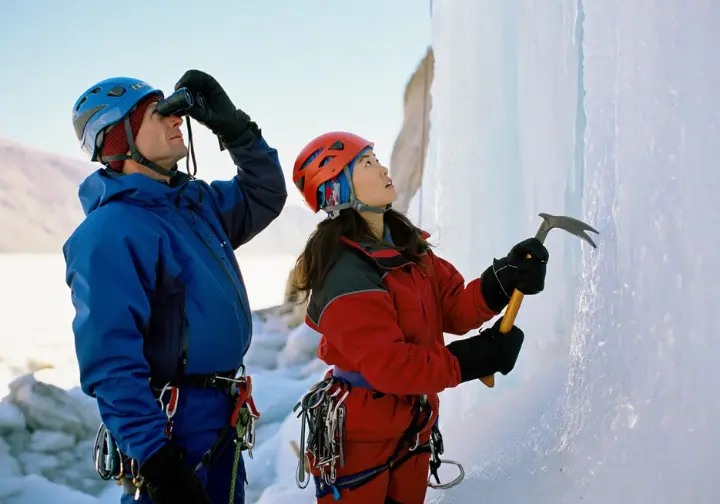
Lake Willoughby’s magnificent ice formations demand respect and a diligent approach to Lake Willoughby ice climbing safety. This section covers the paramount importance of assessing dynamic ice conditions, details the primary objective hazards present, and outlines essential safety practices and emergency preparedness to ensure your ice climbing adventures are memorable for the right reasons.
Assessing Ice Conditions: Your First Line of Defense
Obtaining and thoroughly understanding current ice conditions is absolutely paramount before heading to Lake Willoughby. Conditions can change with astonishing rapidity due to fluctuations in temperature, sun exposure, and precipitation. Key sources for information include online resources like NEIce.com (a great source for Lake Willoughby NEClimbs updates) and Mountain Project, local guide services who are out on the ice regularly, and detailed mountain weather forecasts from NOAA/NWS.
For the most up-to-date reports, check current New England ice conditions frequently. On-site assessment involves looking for visual cues such as ice color (blue and dense is often good; white and aerated can be weaker), signs of running water, recent icefall, or the presence of delicate icicles. Auditory cues, like hollow sounds when tapping the ice, can indicate delamination. Always test your placements to gauge ice quality – differentiating hero ice from brittle or chandeliered formations.
Consider the route’s aspect, recent temperature trends, the effects of snow cover, and the structural integrity of features like pillars and curtains. Understanding visual cues for ice quality assessment is a skill developed over time, highlighting the importance of safety in ice climbing.
Objective Hazards: Falling Ice & Avalanches
Falling ice is a significant and constant hazard at Lake Willoughby. This danger is often exacerbated by solar radiation, especially on Mt. Pisgah’s southwest-facing aspects, as well as by freeze-thaw cycles and the presence of unbonded or poorly adhered ice. Mitigation strategies include starting climbs early in the day before the sun hits the ice, being acutely aware of the sun’s path across the cliffs, always wearing a helmet, and making every effort to avoid climbing directly beneath other parties.
Avalanche risk is another serious concern, particularly in gullies such as Twenty Below Zero Gully. Risk factors include periods of heavy snowfall, significant wind loading which can deposit snow in lee slopes, and rapid warming trends. While regional avalanche forecasts and education from sources like the Mount Washington Avalanche Center provide valuable context, localized assessment is critical. Climbers should learn how to recognize avalanche terrain and unstable snowpack.
For those venturing into potential avalanche paths, mitigation includes avoiding hazardous gullies during high-risk conditions, carrying and knowing how to use essential avalanche safety gear (transceiver, shovel, probe), and traveling one at a time across exposed sections. Proper assessing avalanche conditions for climbers is a skill that requires education and experience.
Essential Safety Practices & Emergency Prep
Beyond assessing conditions and specific hazards, several essential safety practices are fundamental to ice climbing at Willoughby. Clear and concise communication between climbing partners is vital. Employ appropriate belay techniques from safe, protected stances. Proficiency in building secure rappel anchors, whether V-threads in solid ice or using substantial tree anchors (always with padding to protect the tree), is non-negotiable. For guidance, one can learn about building V-thread ice anchors.
Given the committing nature of many Willoughby ice routes, substantial experience or qualified instruction is strongly recommended before tackling them. Emergency preparedness includes knowing how to contact local rescue services (Vermont State Police Search & Rescue handles operations in the area; familiarize yourself with Vermont search and rescue protocols). Cell phone coverage is notoriously unreliable, especially at the base of the cliffs, making a satellite communication device a wise investment.
Know the location of the nearest hospitals, such as North Country Hospital in Newport. Always have a bailout plan and carry a kit with first-aid supplies, extra warm layers, and a headlamp. Diligence in mastering proper belay techniques and other safety measures is key for every ice climber.
Gearing Up: Your Lake Willoughby Ice Climbing Kit
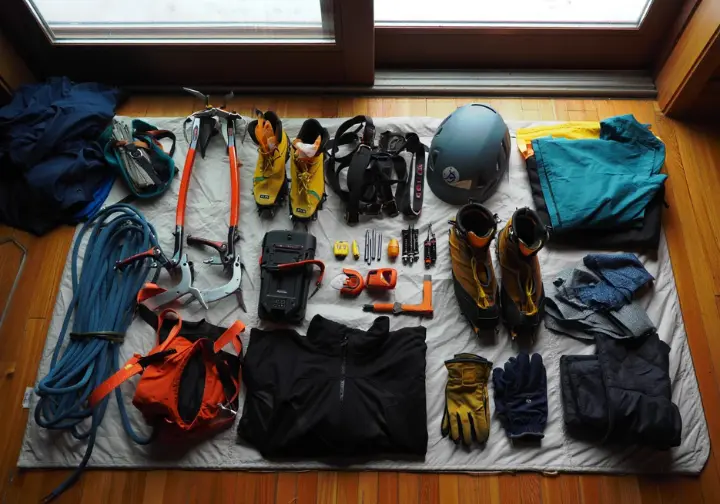
Having the appropriate gear for Willoughby ice climbing is not just about performance; it’s fundamentally about safety and comfort in a demanding winter environment. This section details the essential technical tools, ropes, protection (like ice screws), apparel, and safety equipment required for a successful and secure ice climbing trip to this premier Vermont destination. Often, you’ll need only ice gear for the pure ice routes.
Technical Tools: Ice Axes, Crampons, Boots
For tackling Willoughby’s steep ice, modern, leashless ice tools with aggressive picks designed for waterfall ice are highly recommended. Look for tools with curved shafts that provide clearance on bulges and comfortable grips for sustained swings. Your crampons should be well-fitting, rigid or semi-rigid mountaineering models with sharp, vertical front points, preferably with step-in bindings for secure attachment to technical boots.
Critically important are insulated mountaineering boots; double plastic boots or modern insulated single or supergaiter boots are necessary for warmth and performance. Ensure your boots are compatible with your crampons. Finally, a climbing-specific helmet is mandatory for protection against falling ice and other debris. When choosing ice climbing tools and other gear, understanding their specific applications in environments like Willoughby is key, and selecting the right ice axe is a foundational step for any serious ice climber.
Ropes and Ice Protection
Dry-treated ropes are absolutely essential for ice climbing at Lake Willoughby. Non-dry ropes can absorb water, freeze, and become dangerously difficult to handle, significantly losing strength. For multi-pitch ice routes, a common rope strategy involves using 70m single ropes, or ideally, 60-70m double or half ropes. These thinner twin/half ropes offer benefits like reduced rope drag on wandering pitches, the ability to make full-length rappels, and redundancy.
Some climbers discuss the benefits of double ropes for ice climbing in various forums. A standard “Willoughby rack” of ice screws typically consists of 10 to 14 screws of various lengths, ranging from 10cm to 19cm or even 21cm; though for shorter, less committing climbs, some may opt for 5-8 ice screws. It’s particularly important to include “stubby” ice screws (10cm, 13cm) for use in thin ice conditions, which are common. You will also need a V-thread or Abalakov hooker tool and 7mm (or thicker) cord or webbing for building rappel anchors. Careful consideration goes into choosing appropriate ice screws for the conditions you expect.
Apparel: Layering for Cold and Wet
A flexible layering system is crucial for managing comfort and staying warm and dry while ice climbing at Willoughby. Start with moisture-wicking synthetic or wool base layers (never cotton). Add insulating mid-layers, such as fleece jackets or light puffy vests/jackets. Your outermost layer should be a high-quality waterproof and breathable shell jacket and pants to protect against wind, snow, and melting ice. A warm, oversized synthetic or down belay parka with a hood large enough to fit over all your layers and helmet is essential for staying warm during belays and other stops.
Carry multiple pairs of gloves and mittens: dexterous gloves for leading, warmer gloves for belaying, and heavy mittens for emergencies or extreme cold. Warm headwear, such as a beanie worn under your helmet and a balaclava or neck gaiter, is also vital. Don’t forget warm wool or synthetic socks, and always bring an extra pair. A good overview of essential ice climbing apparel can help refine your choices, including selecting an ice climbing jacket suited for these conditions.
Guided Ascents & Instruction: Elevating Your Willoughby Experience
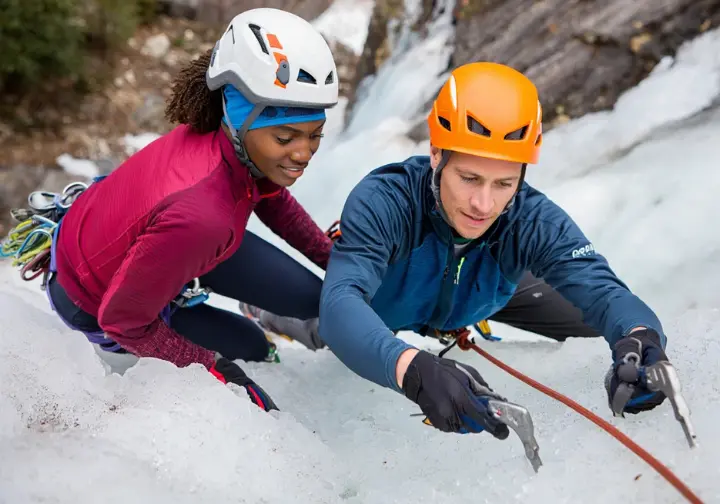
Whether you’re new to the unique challenges of ice climbing or an experienced climber looking to tackle Willoughby’s committing classics, engaging professional guided ice climbing Lake Willoughby VT services can significantly enhance your safety and skill. This section explores the advantages of hiring guides, lists reputable local services, and outlines what to look for in courses for ice climbers of all levels.
Benefits of Hiring a Professional Guide
Professional guides bring invaluable local expertise to your Lake Willoughby ice climb adventure. They possess up-to-date knowledge of current ice conditions, subtle route nuances, and the safest lines of ascent, coupled with Willoughby-specific hazard assessment skills. Guides are also exceptional educators, facilitating skill development by teaching advanced techniques for steep ice, efficient multi-pitch systems, robust anchor building, and sound leading strategies.
For many, hiring a guide offers the opportunity to safely experience classic climbing routes that might otherwise be beyond their independent leading ability, creating memorable and challenging ascents. Perhaps most importantly, a guide’s primary role is managing risk through trained observation and decision-making, ensuring the well-being of their party. The advantages of guided climbing instruction are numerous, mirroring the value of guided mountaineering climbs in other serious environments.
Reputable Guide Services for Willoughby
Several reputable guide services are known to operate at Lake Willoughby and offer a range of programs. These include Cathedral Mountain Guides and Synnott Mountain Guides. Other services that may guide in the climbing area include Willard Mountain Guides, Kingdom Adventures Mountain Guides, The Mountain Guides, Alpine to the Max, and International Mountain Climbing School (IMCS). When selecting a service, it is important to inquire about their specific experience guiding at Lake Willoughby, as its conditions can be quite unique. One of the primary Willoughby guiding services is Cathedral Mountain Guides.
Crucially, always verify the American Mountain Guides Association (AMGA) certification status of your potential guides. AMGA certification is a recognized benchmark of professional competence and adherence to high standards of practice in the mountains. You can find lists of AMGA certified mountain guides on their official website. This relates to generally understanding climbing instructor certifications.
Choosing Your Course: Beginner to Advanced
Guide services at Lake Willoughby offer a variety of courses tailored to different skill levels for aspiring ice climbers. Typical introductory courses focus on fundamental skills: proper use of ice tools and crampons, basic ice climbing movement techniques, belaying on ice, and extensive practice through top-roping.
Intermediate and advanced courses build upon these basics, introducing climbers to multi-pitch systems, the techniques and strategies for leading on ice, building secure ice anchors (including V-threads), and specialized movement skills for tackling steeper and more complex ice formations. Specialized leading courses are designed to impart the skills and judgment necessary for safely leading ice climbs. These often cover protection strategy (including placement of ice screws), efficient anchor construction, and in-depth risk assessment in variable conditions. For those seeking advanced ice climbing courses, local guides provide excellent options for progressing your ice climbing skills.
Preserving the Ice: Stewardship and Local Community
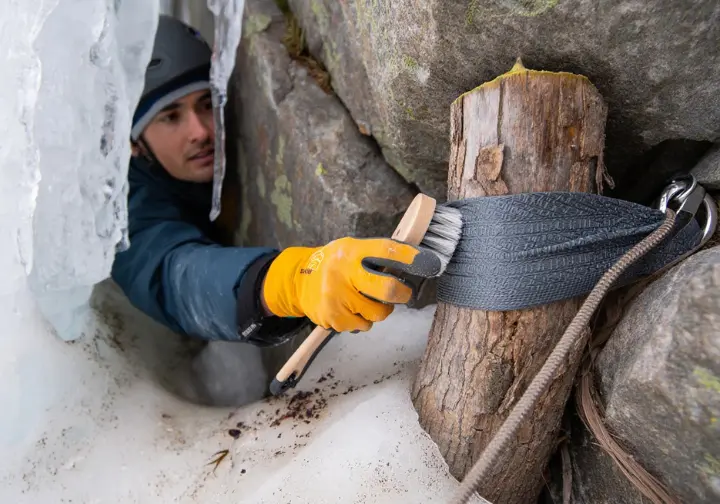
Lake Willoughby’s stunning ice is a precious and fragile resource. As climbers, we have a profound responsibility to practice excellent stewardship to ensure its preservation for future generations. This involves adhering to Leave No Trace principles, understanding access sensitivities like falcon closures, and supporting the local climbing organizations that work to protect Lake Willoughby conservation climbing access to this incredible climbing area.
Leave No Trace (LNT) on Ice
The principles of Leave No Trace are paramount when climbing at Lake Willoughby. This begins with packing out absolutely all trash, which includes food wrappers, used tape, and, critically, human waste. Due to the frozen ground and sensitive environment, digging catholes is often not feasible or appropriate. Minimize your impact at the base of climbs and on top-outs by avoiding damage to fragile vegetation. Be mindful of where your gear, ropes, and packs are placed.
When using trees for anchors, select only live, substantial trees and always use padding – such as wide webbing, old carpet pieces, or purpose-made tree protectors – to prevent rope or sling abrasion from damaging the bark. For information on protecting trees when anchoring, state resources can be helpful. If you build V-threads for rappelling, make an effort to remove your cordage when you are the last party down to prevent littering the ice. If cord must be left, ensure it is in good condition. These actions reflect core tenets of practicing Leave No Trace principles.
Respecting Access: Closures and Property
Respecting access is fundamental to maintaining climbing opportunities at Lake Willoughby. A key consideration is the annual Peregrine Falcon nesting closures on Mt. Pisgah. These closures, typically in effect from March or April through August, are mandatory and crucial for the protection of these remarkable birds and for ensuring continued climbing access once nesting season is over.
CRAG Vermont (cragvt.org) is the primary source for up-to-date information on Vermont peregrine falcon nesting closures. If your approach trails cross private property, always stay on marked trails and be courteous and respectful to landowners. Responsible parking that doesn’t block roads or driveways, and minimizing noise, are also important aspects of respecting access and the local environment around the Willoughby cliffs. Many popular climbing areas have similar needs for respecting seasonal climbing closures.
Supporting Local Climbing Organizations (LCOs)
Local Climbing Organizations (LCOs) like CRAG Vermont play a vital role in maintaining access to climbing areas, promoting stewardship, and representing the interests of climbers. CRAG Vermont has been instrumental in preserving climbing at Lake Willoughby through building relationships with landowners and state agencies. They have a Memorandum of Understanding (MOU) and a Climbing Management Plan (CMP) with the Vermont Agency of Natural Resources (VT ANR) for state lands that include Mt. Pisgah.
You can learn more about local climbing advocacy in Vermont through their website. On a national level, the Access Fund is an advocacy organization that supports these local efforts and works to protect climbing areas across the country. Consider learning about national climbing access advocacy and its impact. We encourage all climbers who enjoy Willoughby to support these organizations through membership, donations, or volunteering. It’s a direct way to contribute to preserving access to this incredible resource.
Key Takeaways for Your Willoughby Ice Adventure
Your ice climbing trip to Lake Willoughby can be an unforgettable experience. To make it so for all the right reasons, keep these essential points in mind for every ice climb:
- Lake Willoughby offers a world-class, yet serious, ice climbing experience defined by its massive, ephemeral formations and challenging ice routes; thorough preparation is non-negotiable.
- Always prioritize safety by meticulously checking current ice conditions from reliable sources (NEIce.com, guides), understanding objective hazards like falling ice and avalanches, and being prepared to retreat if conditions dictate.
- Ensure you have the correct gear, including dry-treated ropes, a comprehensive rack of ice screws (with stubbies for thin ice), appropriate layers for severe cold, and avalanche safety equipment if venturing into gullies.
- Consider hiring AMGA-certified guides for instruction or to tackle classic climbing routes, especially if you are new to Willoughby’s demanding terrain or looking to advance your skills on its steep ice.
- Embrace your role as a steward: practice Leave No Trace principles meticulously, respect all wildlife closures (especially for peregrine falcons, with information from CRAG Vermont), and support local climbing organizations to help preserve this incredible resource.
Frequently Asked Questions about Lake Willoughby Ice Climbing
What is the absolute best time of year to plan an ice climbing trip to Lake Willoughby? >
I’m an experienced rock climber but new to ice. Can I teach myself at Willoughby? >
How reliable is cell phone service at Lake Willoughby for emergencies? >
Are there any specific environmental concerns I should be aware of besides Leave No Trace? >
We are a participant in the Amazon Services LLC Associates Program, an affiliate advertising program designed to provide a means for sites to earn advertising fees by advertising and linking to Amazon.com. As an Amazon Associate I earn from qualifying purchases. We also participate in other affiliate programs. The information provided on this website is provided for entertainment purposes only. We make no representations or warranties of any kind, expressed or implied, about the completeness, accuracy, adequacy, legality, usefulness, reliability, suitability, or availability of the information, or about anything else. Any reliance you place on the information is therefore strictly at your own risk. Additional terms are found in the terms of service.



